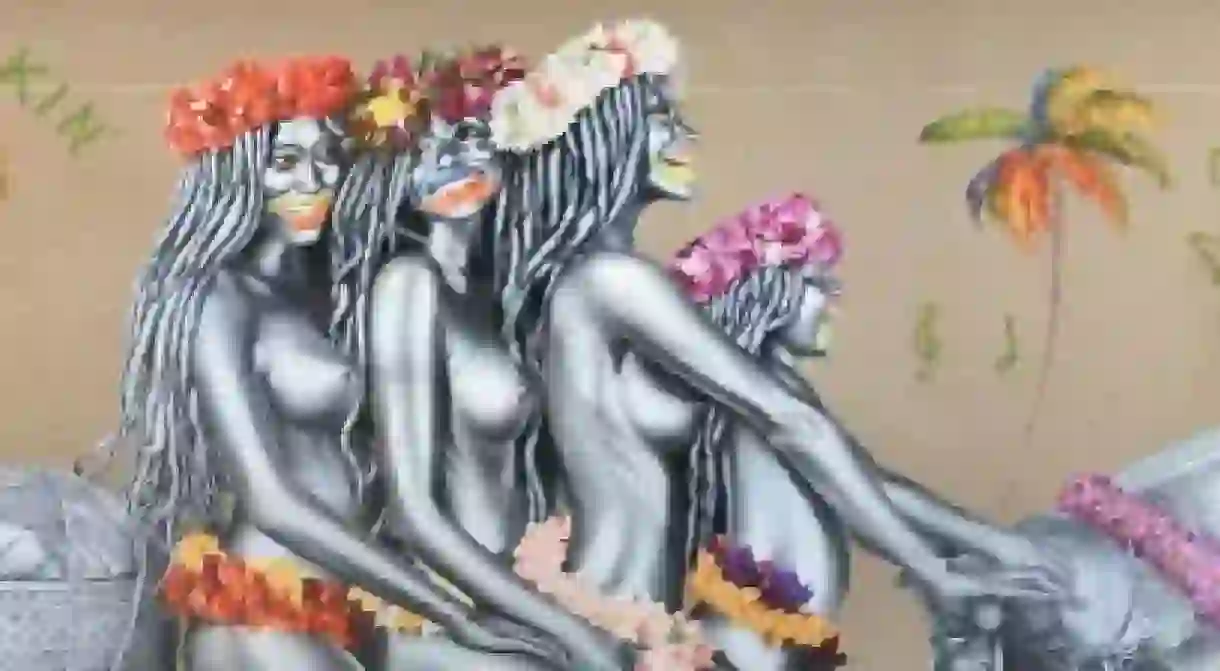The Life & Work of Ashley Bickerton | A Neo-Geo Sensation

Artist, sculptor and painter Ashley Bickerton was born in Barbados, studied at the California Institute of the Arts, became a member of Neo-Geo group the ‘Fantastic Four’, before settling in Bali in 1993. His work, and the work of his group, caused a sensation with its anti-consumerist and anti-capitalist motifs, and has since been exhibited as part of public art collections in Europe and the US. We take a look at the artist, his work and his life.

Ashley Bickerton, son of Derek Bickerton, moved several times around the world and dwelled in many different countries, in the light of his father’s work and career in languages and linguistics. He was educated in the US, has exhibited his work on a global scale, and has subsequently established a flourishing career as a world-renowned artist. He worked closely with artists Peter Halley and Jeff Koons in the 1980s, who together pioneered the artistic movement called ‘Neo-Geo’ a truncation of ‘Neo-Geometric conceptualization’, which has taken influences from both the pop-art and minimalist artistic movements, in addition to French philosopher Jean Baudrillard.


Becoming a dominant force as part of the East Village Art scene in the 80s in the light of his quirky, abstract portraits, Bickerton’s work in more ways than one consciously stands in opposition to the mechanization of the consumerist world in which we live, as he frequently alludes and makes reference to societal concerns. This is a prevalent goal in many of his works, and is evidenced in his comprising of his own invented logos such as ‘culture lux’ and ‘suzie’, which can be found on many of his portraits.

As part of this challenge to mechanization, too, his opuses often utilize and evoke shapes and geometric design, metaphorically representing society through different mediums and resourceful materials. His pieces sometimes comprise of natural, found objects such as driftwood or coconuts, and are rich and diverse in their variety. His latter works, those which were produced post his relocation and choice of residence in Bali, have become increasingly figurative, ranging from native, naked, curvaceous women to the vibrant splashes of colour that are flecked across the faces of models, to the portrayals of various exotic characters. These works, it could be suggested, marked a subtle shift towards the negative impacts of capitalism upon the natural world.

In his career, Bickerton has worked both on and off the canvas. He spent time working at the Singapore Tyler Print Institute, specifically working on paper oeuvres such as ‘Green Reflecting Heads Duo No.5’, in 2006. He is at present participating in the Gajah Gallery in Singapore, where he previously unveiled his solo exhibition Junk Anthropologies (2014), and is now contributing to their most recent art platform – Yogyakarta Art Lab.

Bickerton has become and remains a powerful and important figure in his influences with the next generation, and his works mark an artistic movement that is now globally renowned. Gajah Gallery will be presenting Ashley Bickerton’s works at Art Stage Singapore between 22 and 25 January 2015. By Sophia Francis













